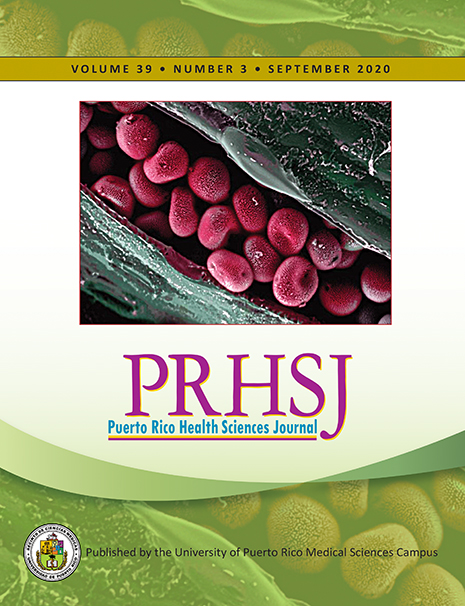Abstract
Objective: Emergency department (ED) visits for the treatment of skin abscesses have increased with the emergence of community-associated methicillin-resistant Staphylococcus aureus (CAMRSA). There is limited information about the bacteriology of cutaneous abscesses evaluated in ED in Puerto Rico. The purpose of our study was to characterize the pathogens cultured from abscesses of patients in the ED consulted to the Dermatology Service of University of Puerto Rico School of Medicine. Methods: Patients with skin abscesses consulted to the Dermatology Service by the ED of P.R. Medical Center from 2012 to 2017 were included. Data retrieved included demographic information, past medical history, prior antibiotic use, distribution of lesions, and treatment provided. Bacteriology results and antimicrobial susceptibility patterns from cultured skin lesions were recorded. Results: Ninety patients diagnosed with skin abscess were evaluated. All patients underwent incision and drainage; this was the sole treatment in two patients. The most frequently administered systemic therapy was oral clindamycin in 32 patients (36%). A total of 66 patients (73%) had S. aureus isolates, most of them (85%) MRSA. Among the isolates with MRSA, 14.3% were resistant to clindamycin. All MRSA strains were susceptible to tetracycline and vancomycin. Conclusion: There is a high prevalence of MRSA causing abscesses in the Hispanic population evaluated in an ED in Puerto Rico. Systemic antibiotic use for the treatment of skin abscesses after incision and drainage remains high despite published guidelines arguing against their widespread use. Clindamycin resistance in our patient population appears to be more frequent than previously reported.
Authors who publish with this journal agree to the following terms:
a. Authors retain copyright and grant the journal right of first publication with the work simultaneously licensed under a Creative Commons Attribution License that allows others to share the work with an acknowledgement of the work's authorship and initial publication in this journal.
b. Authors are able to enter into separate, additional contractual arrangements for the non-exclusive distribution of the journal's published version of the work (e.g., post it to an institutional repository or publish it in a book), with an acknowledgement of its initial publication in this journal.
c. Authors are permitted and encouraged to post their work online (e.g., in institutional repositories or on their website) prior to and during the submission process, as it can lead to productive exchanges, as well as earlier and greater citation of published work (See The Effect of Open Access).
